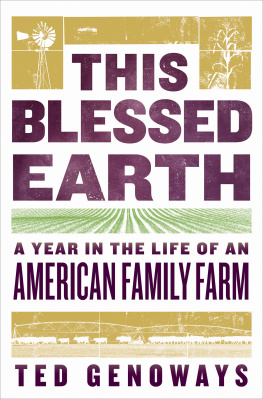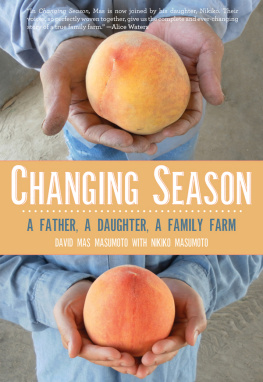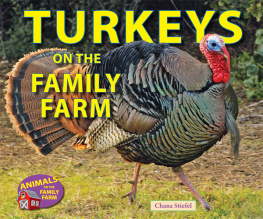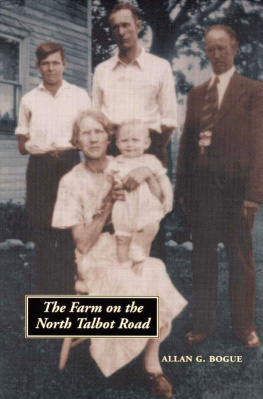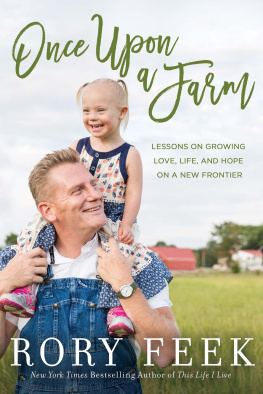
November 2014

F irst the truck appeared, then the cattle trailing along behind. The November sky was slate-gray and cloud-strewn, the temperature holding in the forties, just warm enough that the intermittent rain came as a dry mist rather than snow. Meghan was at the wheel of the white pickup, slowing occasionally to bang on the side door and call out to the hesitant cows. Their big bags swayed under them as they ducked over the furrows. Come, boss, Meghan called, beating the door again like a drum. Behind her, Rick and Kyle on four-wheelers stitched along the edges of the herd, circling up stray calves and keeping the line moving. Kyle, in a stocking cap covering his buzz-cut head, stood up on the running board, straddling his seat. He kept his hands on the handlebars, still easing forward, as he scouted across the line of jogging cattle. If he spotted a loose calf or errant cow on the other side, he whistled to Rick, who zoomed ahead, shouting in a hoarse staccato. Go on, now. Go, go, go. Go on, get moving.
After the end of harvest, when the last of the beans were in the bins and the calls for white corn had started to come in from the elevator, when the rented harvester had been loaded back onto the flatbed and sent on to some other farm farther north, Rick turned his attention straight to getting the cattle ready for winter and then for spring calving. He drove the trailer out to Curtis, where he grazed the spring cow-calf pairs on pasture, growing them on grass through the summer and start of fall, and loaded them up. He brought them back to York County and ran them onto a quarter section of freshly harvested corn surrounding the solar-powered barn.
In fields like those, where the corn has been well irrigated by a center pivot, the cut stalks standing in a winter field along with the wayward cobs and kernels scattered by the combine, what farmers call crop residue, can provide ample feed without any additional cost. The moisture left in the stalks plus the greens from the turnips and radishes planted as winter cover crops are enough to get lactating mothers through until weaningand for those cows without calves, calories from those cover crops can actually help them put on pounds. But if the cows were going to be nursing newborns in a few months, then it was time to separate the spring calves from their mothers in order to wean them, and it was time to check the cows for new pregnancies.
Meghan groaned just thinking about it all. When harvest is over, youd think you could catch your breath, she said. But were straight into the cowsbringing them home from pasture, sorting them, weaning them, and getting them to the sale barn. Its a lot. She hit the gas, speeding up to the pipe corral attached to the old barn. She jumped out of the truck and swung open the wide metal gate. Cmon, girls, she called again. Heads bobbing, the first of the mothers walked obediently into the pen, their calves skipping but sticking close. The Hammonds raised all Angus cattle for beef. In recent years, Rick had moved away from hormones and feed-grade antibiotics, and he had tried to do more direct marketing, selling halves and quarters to customers willing to pay a premium for hormone-free, grass-finished beef. But with so much risk already sitting in his grain bins, Rick was content to get his calves to market and get more on the way. Beef prices were soaring, hitting $6.30 per pound at retail, more than a dollar above where theyd been just a year before. Most years, Rick regards the cattle as a side operation, work he enjoys but doesnt expect to pad his wallet. But with prices climbing and several years of drought driving the national cattle herd to a lower point than it had been in decades, the sale of beef promised to be the farms saving grace for 2015.
Once the cattle were all in the large holding pen, Meghan swung the gate closed and grabbed her notebook. They would go systematically through each cow-calf pair, checking ear tags and noting any obvious health problems, before running them into separate pens. After that, they would herd the calves into the chute for more detailed health inspections. Rick, Meghan, and Kyle, as well as Dave, who had been waiting back at the barn, all filed into the wide paddock, the cattle stooping and scattering around them like startled birds. Rick had a pair of rattle paddles, like two oversized lollipops, lemon and orange, but inside those bright-colored plastic pads were ball bearings that shook and spooked the cattle forward.
Arms stretched wide, coaxing and calling, shaking one paddle and then the other, Rick separated calves, one by one, from their mothers. He sent the weaned calves one way and then the other, until they skittered toward the gate, which Dave would swing open to usher them into the calf pen. If they showed signs of balking at the doorway, Dave and Kyle had herding rods, nothing more than long flexible poles, to tap their hindquartersjust enough to trigger a prey animals flight instinct and send the calf galloping ahead. Eventually, when the calves were separated out, the mothers were moved as a group to another pen, and the next batch of pairs was brought in.
This was how it proceeded for hours, cajoling and cursing. The four dust-covered and wind-chapped humans wading into galloping herds of erratic cattle, their black flanks twitching and mud-patched, their hooves kicking up more clouds of dirt in the holding pen. Rick would call out to the cows, then to his helpers, and before long he was yelling at Meghan, Meghan yelling back at him, and then the two of them were laughing at each other. And with each new group, the din of the corral grew: calves bawling for their mothers, worried cows mooing in response, straining to lift their mouths, tongues lolling, over the crush of other fussing mothers.
Working cattle is a high-stress time, Rick had warned me ahead of time. Be prepared for a lot of noise. There was certainly that, but it only dawned on me later that it wasnt so much the chaos he was worried about as how I might respond to the distressed and calling mothers or the sight of the skittish calves as they bolted through the gate and were snapped into the chute, so Meghan could complete a wellness check, looking for tumors or signs of nasal or bronchial infections or pinkeye. She marked down the information for each as she went, the pinned calf tense in the chute, sometimes letting out a meek bawl, sometimes releasing a milky panicked poop, its eyes rolling and wild to be free.
We had pinkeye terrible this year, Meghan told me later, and pneumonia in one group. She shook her head in frustrationanother side effect of all the rain late in the season. We dont get pinkeye out west, because its a drier climate. But in the eastern part of the state, flies hatch out with the rains and swirl over manure piles left in the fields and feed yards. When those same flies cluster around the eyes of cows, tonguing the salt right out of their tears, pinkeye can spread and then pass from mother to calf and through the herd. We treated them all ourselves, except for a few that were pretty bad, Meghan said. They had to go in and get a shot in the eye and have the lid stitched shut. That subconjunctival injection of antibiotics to kill the infection, mixed with steroids to knock down the inflammation, usually takes care of the problem in just a few days, but it also means that the animal can no longer be sold as antibiotic-free or steroid-free. A rash of pinkeye can close the door on a whole seasons direct marketing and its premiums.
Next page
